Grooming & care
Extreme heat : how to protect your horse from high temperatures ?
27 June 2022

Grooming & care
27 June 2022

21 June 2022 officially marked the start of summer. For some days, the national heatwave planed now covers most of France. You’re no doubt coping by using misting sprays, fans or air-conditioning if you’re lucky. But what about your horse? Horses are highly sensitive to heat and generally can’t cope well in temperatures above 25 degrees. So, what can you do to stop your horse from dehydrating? What do you do if it gets heat stroke? Here’s a few tips to soothe your four-legged friend.
You probably know this but it’s worth keeping in mind that, on average, a horse drinks 20-40 litres of water a day.
During a heatwave, a horse sweats to control its temperature and cool down its body. By dissipating the heat in this way, it can lose up to 15 litres of water per hour. As a result, horses can drink up to 80 litres of water a day. So, keeping your horse well-hydrated is vital.
You must check that your horse always has access to cool, fresh water all the time. Make sure that troughs are working properly and buckets don’t leak but check they are clean too. Even if a horse is thirsty, it might not want to drink the water you give it if it smells odd.
Also, don’t give it iced water. This could trigger stomach ache or cause a thermal shock.

The feed you give your horse is also helps good hydration. If it contains moist foodstuffs, like grass, it can provide your horse with part of its hybrid supplements. By contrast, a horse will need more water if you give it dry feed, like hay, straw and pellets.
Make sure your horse doesn’t drink too much in one go. You might have to stop it mid-course so that it doesn’t fill its stomach too quickly.
If you keep your horse in a field, make sure it has a shady spot at the hottest time of day. Trees are best but sheds or shelters big enough for it to move around in are good too.
If your horse is stabled in a stall, take it out in the late afternoon or evening to enjoy the cooler air. If possible, keep your horse in its stall at the hottest time of day.
Just like you, your horse will certainly love to feel the breeze from a fan. That said, be careful about any dust raised when using fans. A stall guard will allow air to circulate more. Your horse will be able to put his head outside. A stable curtain will protect it from direct sunlight. A head protector will provide optimal protection for your horse.
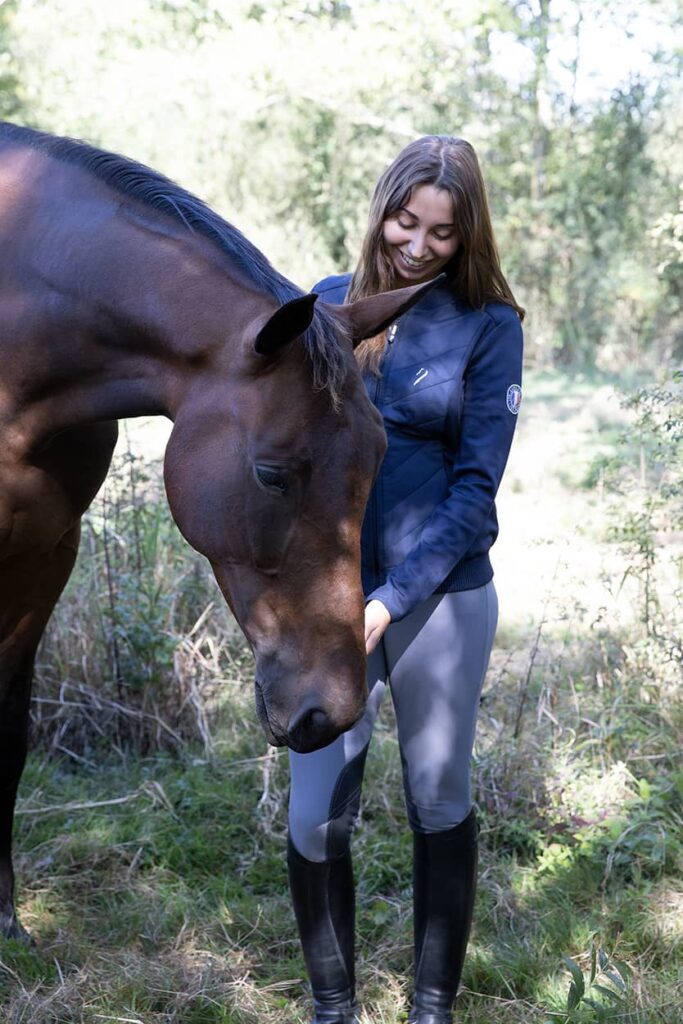
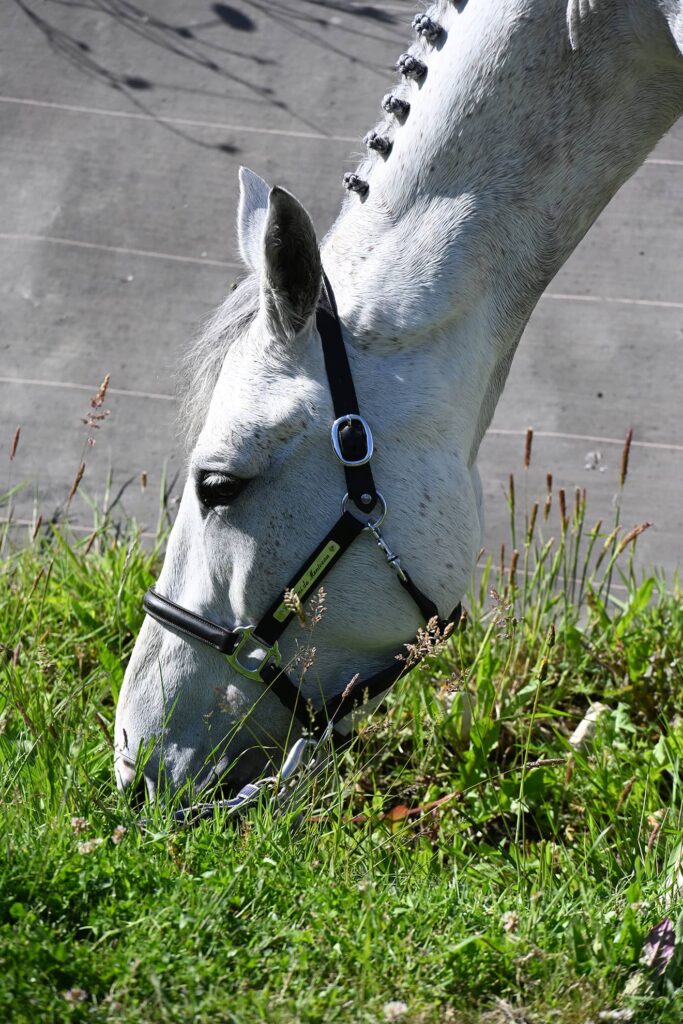
Shower your horse with water to lower its temperature and make it more comfortable. Keep a thorough eye on the water temperature to avoid extremes. Shower your horse gradually, bit by bit, and don’t use ice-cold water. Use a sweat scraper to remove water from your horse before it gets warm. Leaving it on would actually have the opposite effect. Next, take your horse into the shade to dry it off.
You can also cool off just the hottest parts of your horse’s body (between its thighs, neck and head) with a wet sponge.
If your horse has pale skin and pink patches, apply sunblock to prevent sunburn. A long bonnet will protect the tip of its pink nose. If it’s already too late, apply aftersun lotion.
However counterintuitive it seems, a bonnet and blanket prevents the sun (and UV rays) from reaching the horse’s skin. They will also help with annoying flies that often come with heatwaves. Repellent sprays, blankets or masks provide your horse some respite from battling flies, horseflies and other flying insects.
When a horse sweats it loses minerals (sodium, potassium and magnesium) which it does not automatically replace. So, place a salt block near to your horse. If your horse sweats excessively, you can give it electrolytes.
It is best to leave your horse to rest on really hot days. If you can’t, shorten your riding sessions and alter the times when you work with your horse. Go for a ride at dawn or late in the evening when it is cooler. If possible, try riding in a forest, on the seashore, or another cool spot.


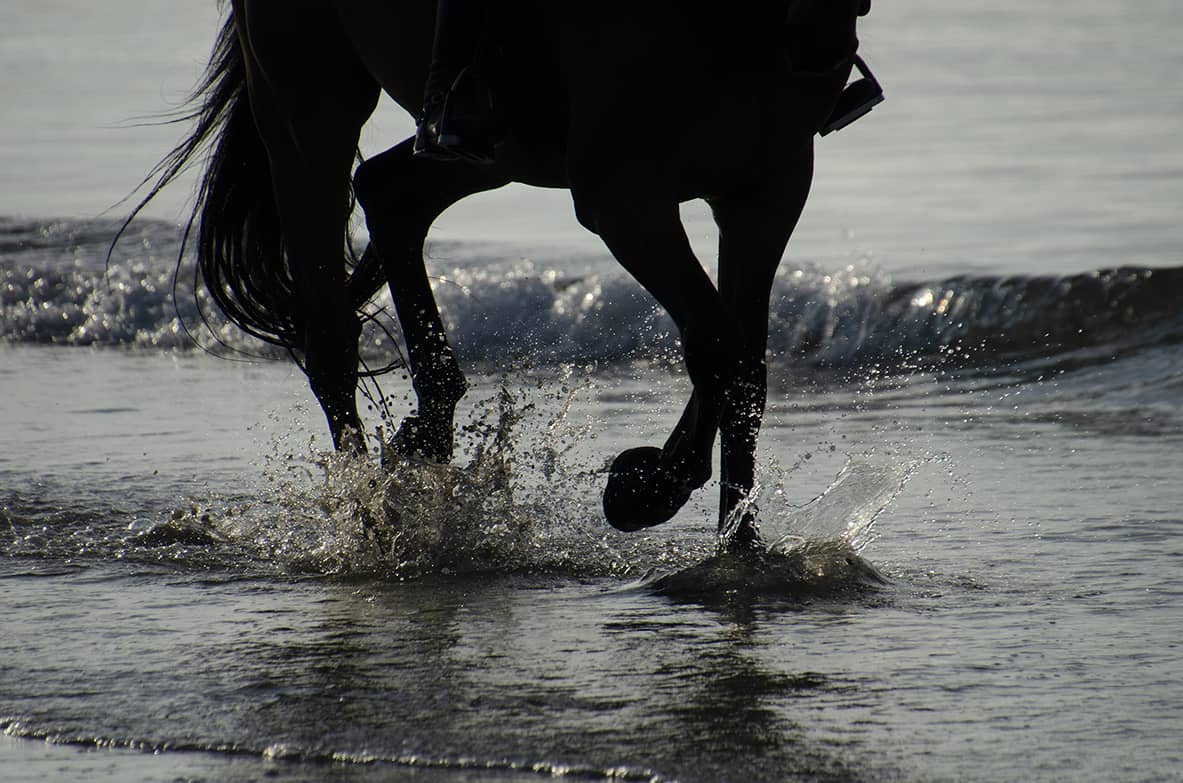
When you are travelling, especially for competitions, keep an eye on how much water your horse drinks before and after competing. Good hydration for your horse starts several hours before it competes. As outlined above, make sure your horse doesn’t drink too much before a demanding ride. A stomach full of water makes competing uncomfortable and at worse could cause a bout of colic.
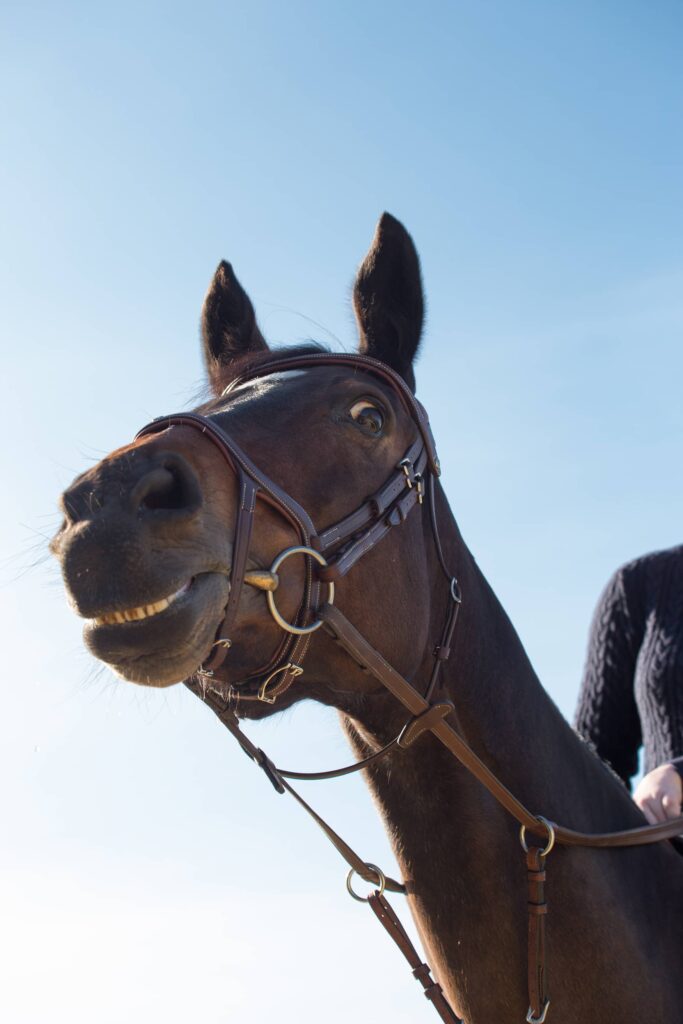
Just gently fold your horse’s skin, on its neck, for example. When you let go, the crease should quickly disappear. If this takes several seconds, your horse is probably dehydrated.
You can also check that its dung is slightly moist. Your horse’s gums should be warm and moist but not sticky.
Keep a close eye on elderly horses and foals. They are often the first to suffer from heatwaves as they have more trouble controlling their body temperature. Also, be on the lookout for horses with diarrhoea as this can dehydrate them. Not drinking enough water can result in kidney problems but also colic. If you are unsure, contact your vet.
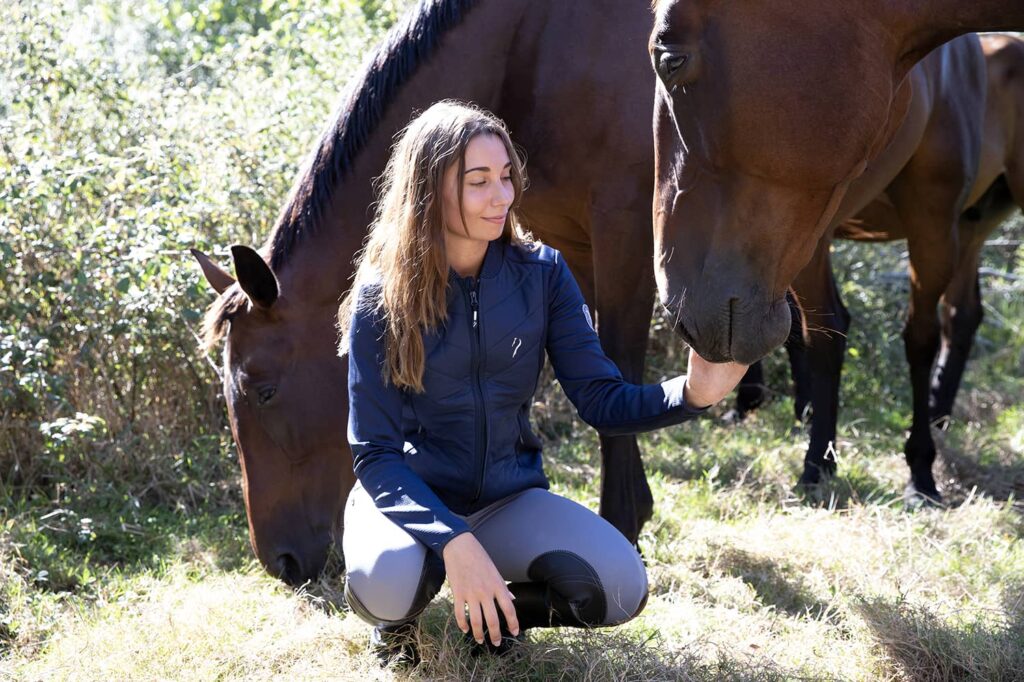
Finally, as a rider, remember to take care of yourself. Regularly apply the right factor of sunscreen, wear a cap or hat and drink plenty of water. Wear clothes made of breathable fabrics that eliminate sweat. Also, don’t forget that just because it’s hot, you must still wear your riding helmet.